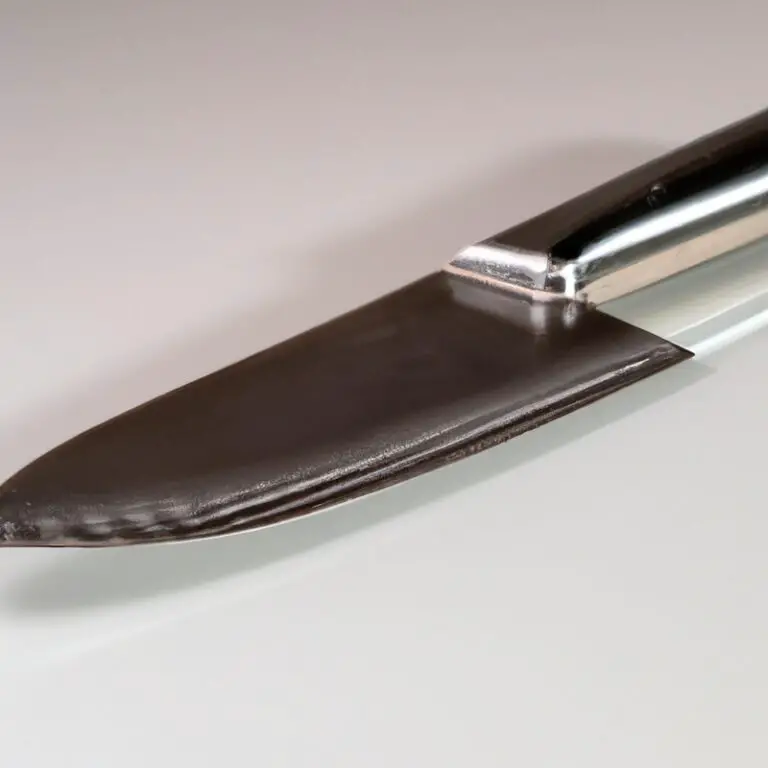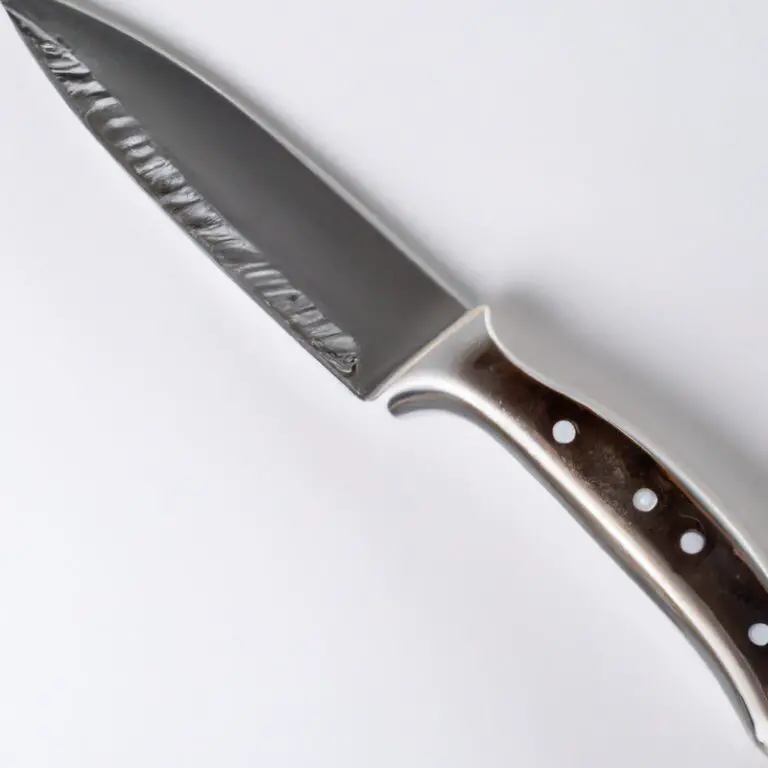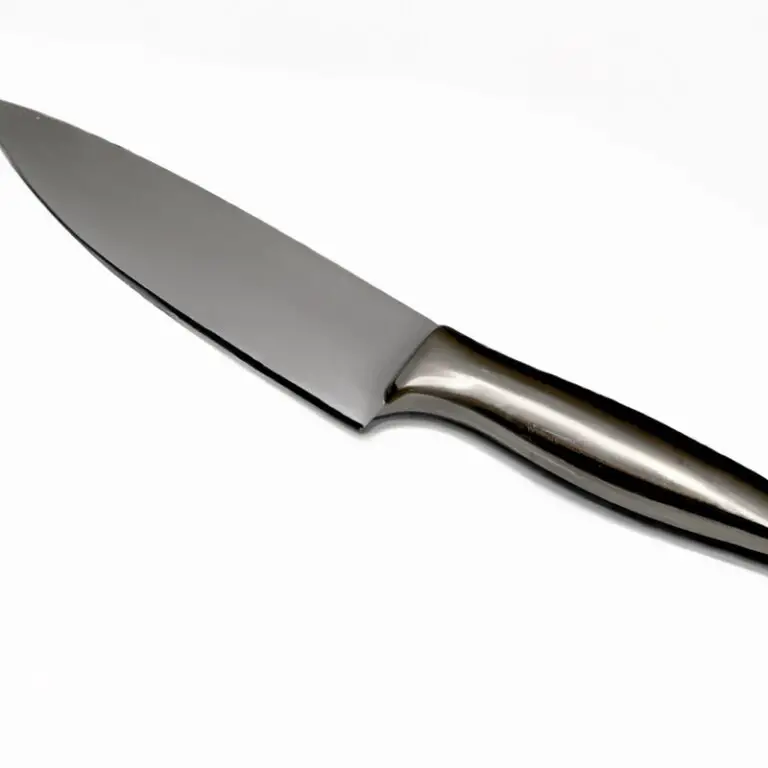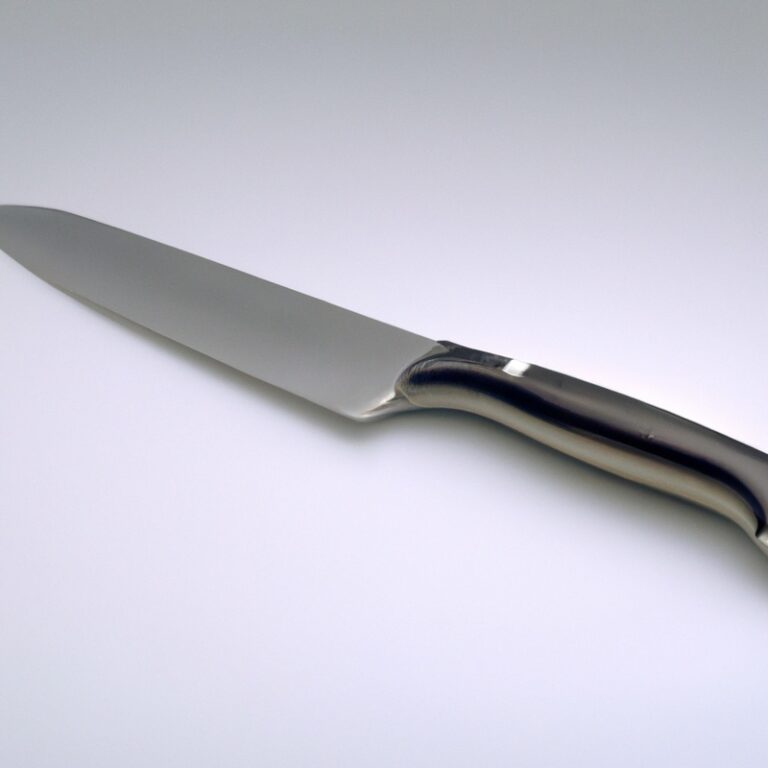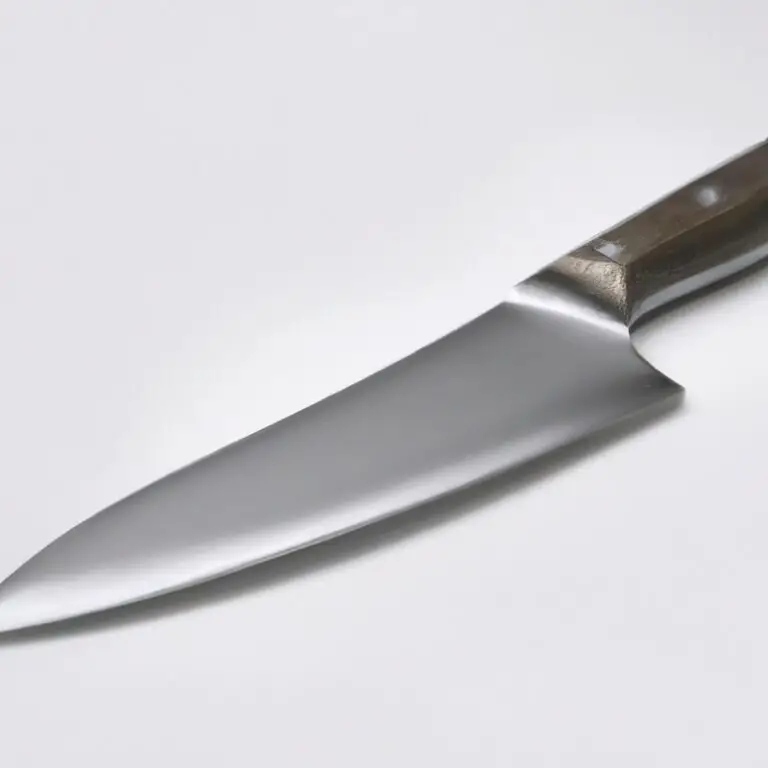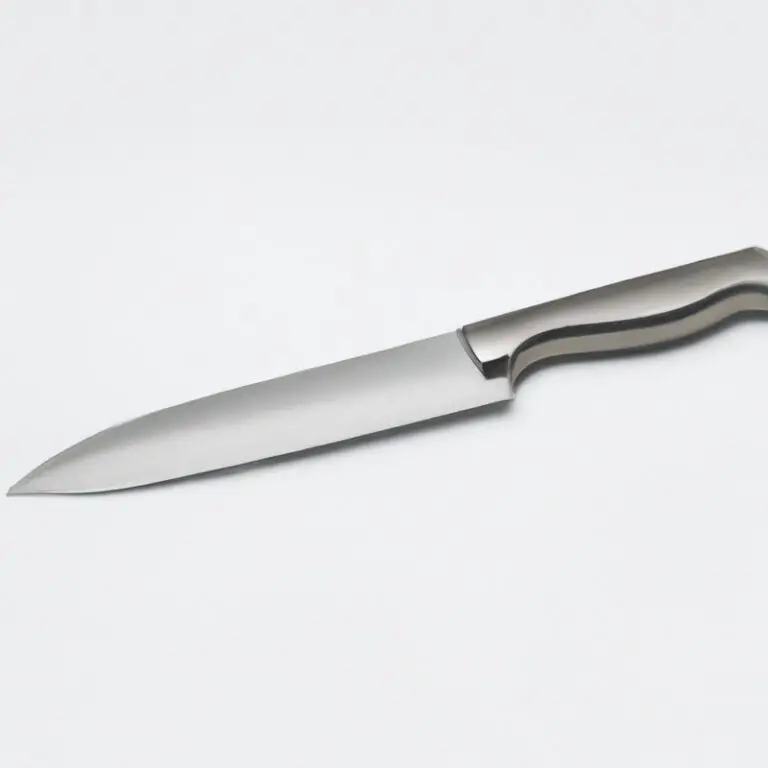Can I Use a Paring Knife To Trim Fat From Meat? – Easily!
Key Takeaways:
- Using a paring knife to trim fat from meat is possible, but not recommended.
- A specialized trimming knife would be more effective and efficient for the task.
- Proper trimming technique is crucial to preventing waste and improving the quality of your meat.
- When in doubt, consult with a professional or reputable cookbook for advice on proper knife use in the kitchen.
Do you often find yourself struggling to trim off that pesky fat from your meat? You might be wondering whether you can use a paring knife for this task.
As a passionate home cook, I have always believed that the right tool enhances the quality of cooking.
However, when it comes to trimming fat with a paring knife, there are some important things to consider. In this article, I’ll share my experiences and knowledge to help you determine whether a paring knife is the right choice and provide you with some helpful tips for effectively trimming fat from meat.
| Question | Answer |
|---|---|
| Can I use a paring knife to trim fat from meat? | Yes, a paring knife can be used to trim fat from meat. However, it’s not the ideal tool for the job. A boning knife or a chef’s knife with a long, sharp blade is more efficient and safer to use. |
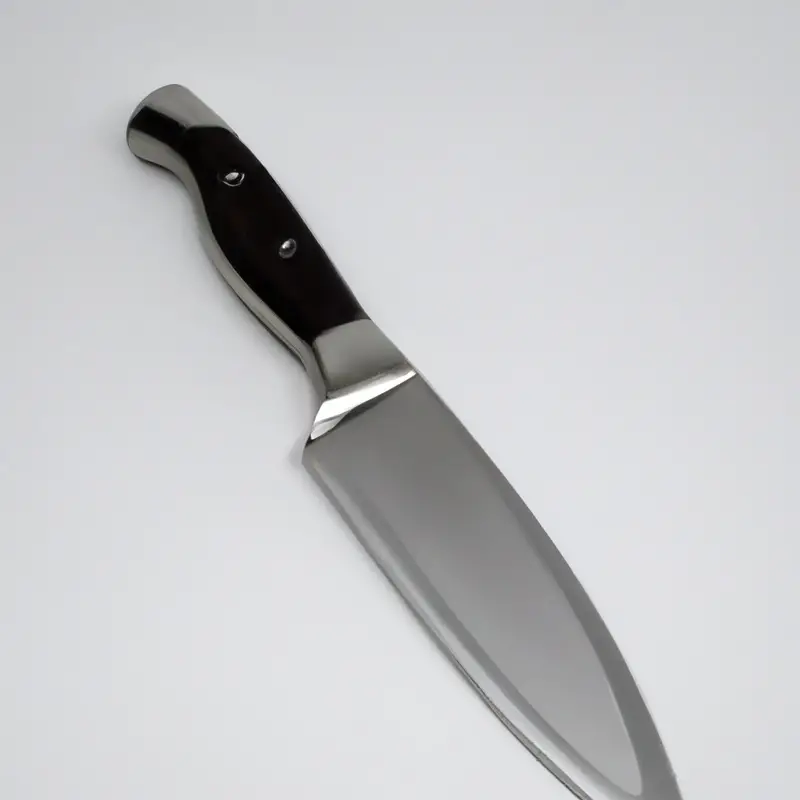
The basics of using a paring knife to trim fat
Using a paring knife to trim fat from meat is a common practice among home cooks and professional chefs alike. To begin, ensure that your paring knife is sharp and of good quality.
Hold the knife firmly with your dominant hand and the meat with the other.
Use short, controlled strokes to remove the fat, taking care not to remove too much meat in the process. Work slowly and steadily, and be sure to clean the knife regularly to avoid cross-contamination.
Remember to exercise caution and keep your fingers out of harm’s way while using a paring knife for this task.
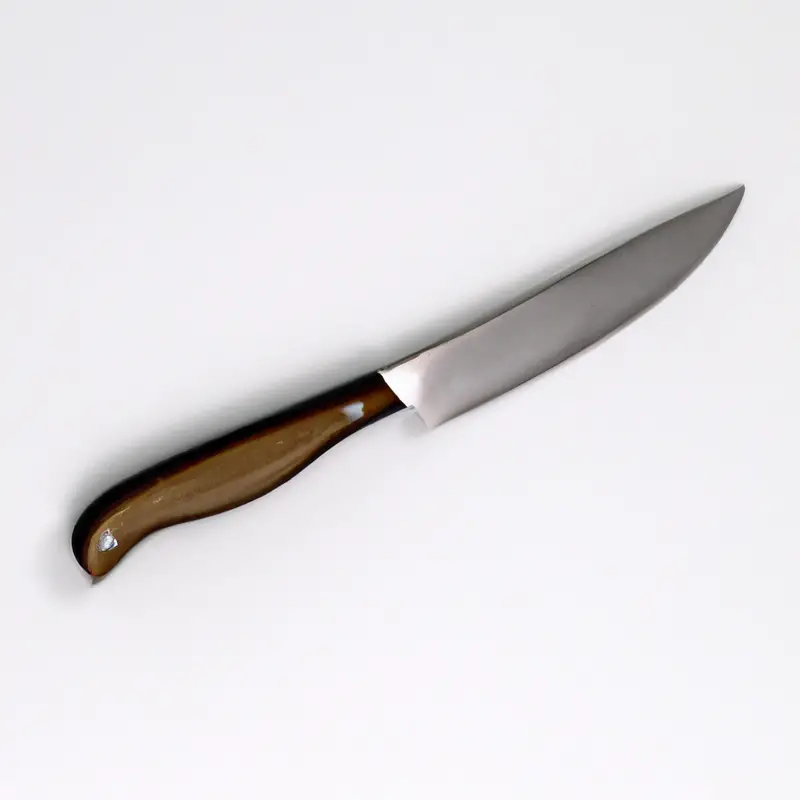
Why a paring knife might not be the best choice for trimming fat
A paring knife might not be the best choice for trimming fat from meat because it is small and has a thin blade. The small size of the knife limits the amount of surface area covered, making it harder to trim fat efficiently.
Additionally, paring knives have thin blades that are typically not designed for cutting through the tough and fibrous texture of fat, which can cause the blade to bend or break.
Experts recommend using a larger, sharp knife with a thicker blade for trimming fat.
Tips for properly holding and using a paring knife for this task
When it comes to properly using a paring knife to trim fat from meat, there are a few tips to keep in mind to ensure accuracy and safety:
- Grip the handle firmly: Grip the handle of the paring knife tightly, ensuring a firm grasp that will allow for better control when trimming.
- Use a pinch grip: Use a pinch grip by placing your index finger and thumb on either side of the blade near the base. This grip provides excellent control when trimming.
- Keep the blade at an angle: Angle the blade of the knife slightly upwards from the cutting board to allow for a smooth, controlled cut.
- Use short strokes: Make short, quick strokes when trimming. Trying to remove too much fat at once can easily lead to accidents.
- Keep your fingers out of the way: Ensure that your fingers are out of the way when using the paring knife to avoid injuries.
By following these simple tips when using a paring knife to trim fat from meat, you can ensure a clean, precise cut with minimal risk of accident.
The importance of using a sharp knife for trimming meat
Using a sharp knife for trimming meat is extremely important, as it makes the process easier, quicker, and safer. A dull knife can make it difficult to make precise cuts, leading to uneven pieces of meat and potential injuries.
It also requires more force, increasing the risk of slipping and cutting yourself.
A sharp knife, on the other hand, allows you to make clean and accurate cuts, reducing the amount of meat wasted and saving you time in the kitchen. It is recommended to sharpen your knife frequently, either using a sharpening stone or taking it to a professional.
A sharp knife will not only make your experience more enjoyable but also help you prepare better meals.
How to choose the right knife for trimming fat from meat
When choosing a knife for trimming fat from meat, it’s important to select a knife with a strong and sturdy blade. A boning knife or a fillet knife is typically the best choice for this task, as they have a flexible and sharp blade that can easily maneuver around bones and through fat.
Look for a knife with a sharp point to help get into tight areas.
Additionally, make sure the knife has a comfortable handle for a secure grip. Keeping the blade sharp is also crucial, as a dull knife can increase the risk of accidents.
Overall, selecting the right knife for trimming fat is essential for achieving the best results and ensuring safety while preparing meat.
Techniques for trimming fat with a paring knife
There are a few techniques to keep in mind when using a paring knife to trim fat from meat. First, start with a sharp knife to make clean cuts and prevent slipping.
Grip the knife firmly and keep your fingers away from the blade.
Angle the knife to the direction of the cut and slowly trim away the fat in small sections. Take your time and be patient to avoid removing too much of the meat.
Additionally, using a fork to hold the meat in place can provide stability while trimming.
Overall, with practice and a steady hand, a paring knife can be a useful tool for trimming fat from meat.
Safety precautions to keep in mind when using a paring knife for trimming meat
Safety is crucial when handling any knife, especially when it comes to trimming meat. Here are some safety precautions you should keep in mind when using a paring knife for trimming meat:
- Make sure your knife is sharp. Dull knives require more force, increasing the likelihood of slipping and injuring yourself.
- Always use a cutting board and ensure it’s stabilized to prevent it from sliding.
- Keep your fingers and other body parts away from the blade. The front two-thirds of the knife closest to the handle is where you should grip the knife.
- Cut away from your body, never towards.
- Concentrate on the task at hand. Distractions can lead to accidents.
- When not in use, store your knife in a designated knife block or drawer.
By following these simple safety precautions, you can ensure that you are using a paring knife to safely and effectively trim fat from meat.
Other tools that can be used for trimming fat from meat
Aside from a paring knife, there are other tools that can be used for trimming fat from meat. A boning knife is a good alternative as it is designed specifically for removing bones and trimming fat.
A chef’s knife can also be used for trimming fat, but it may require a bit more skill and precision.
Another useful tool is a pair of kitchen shears or scissors. These can be used to cut through tough connective tissue and excess fat.
A fillet knife can also be beneficial for trimming certain cuts of meat, such as fish.
It is important to choose a tool that feels comfortable in your hand and is appropriate for the size and type of meat you are trimming. Always ensure that the tool is sharp to avoid accidents and make the task more efficient.
Common mistakes to avoid when using a paring knife for trimming fat
Common mistakes to avoid when using a paring knife for trimming fat include applying too much pressure while cutting, which can damage the meat, and using a dull knife, which can make the task more difficult and increase the risk of injury. It is also important to avoid twisting the knife as it can make the trimming process uneven and lead to wasted meat.
Additionally, some people make the mistake of trimming too much fat and removing the flavor from the meat.
To avoid this, it is recommended to only trim excess fat and leave a thin layer to enhance the flavor and preserve the quality of the meat. Proper grip and posture while using the knife is also essential to prevent accidents and achieve optimal results.
How to care for your paring knife to ensure it stays sharp and effective
Taking proper care of your paring knife is crucial to ensuring it stays sharp and effective for your trimming needs. Here are some tips to help you care for your paring knife:
- Hand wash your knife after each use with soap and warm water. Avoid putting it in the dishwasher as the harsh detergents can damage the blade.
- Dry the knife thoroughly after washing it to prevent rust and corrosion, which can dull the blade.
- Use a honing steel to straighten the blade’s edge before each use. This will help maintain its sharpness and prevent it from becoming dull.
- Sharpen the blade periodically using a sharpening stone or a handheld knife sharpener. This will help remove any nicks or dings in the blade and restore its sharpness.
- Store your paring knife in a knife block or a knife sheath to protect the blade and prevent it from coming into contact with other utensils that could damage the edge.
By following these simple tips, you can keep your paring knife in top condition and ensure it remains sharp and effective for all your trimming needs.
Final Verdict
While a paring knife can be used for trimming fat from meat with proper technique and caution, it may not be the best choice. As a cook, using a sharp knife is paramount for safety and efficiency in the kitchen.
So, always ensure that the knife you choose is suitable for the task at hand.
Whether opting for a paring knife or any other cutting tool, using it safely and effectively will help achieve the desired results. Remember to practice patience and develop the skills required to handle such a task successfully.
Properly caring for your knives will also keep them sharp and effective for many years to come.
With the right knowledge and equipment, you can handle any meat trimming task with confidence and finesse.


